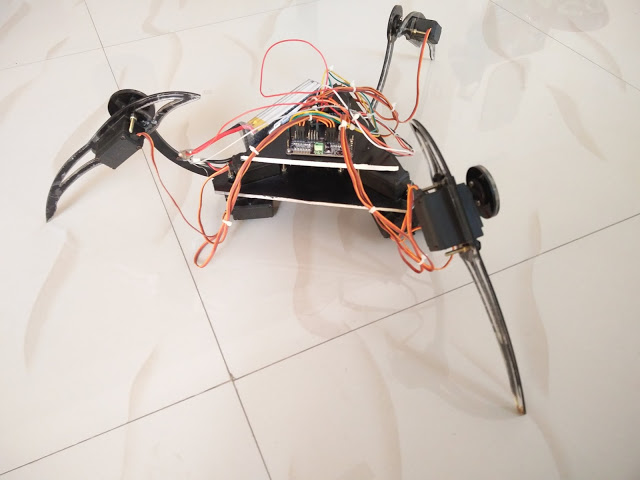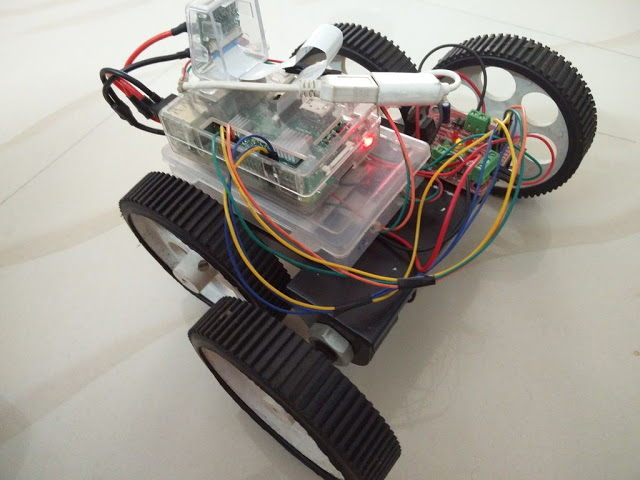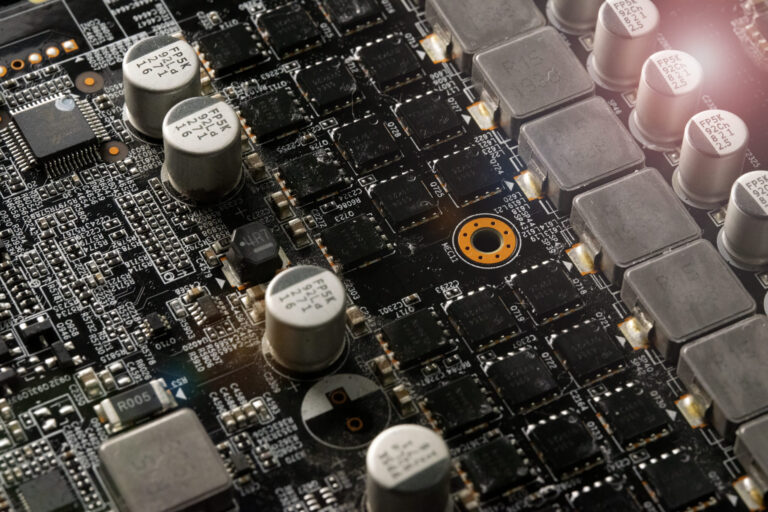Bitcoin Explained: How Blockchain Drives the Crypto Network
The Technology Behind Bitcoin
Bitcoin is a digital currency that operates in a decentralized manner, without the need for a central authority. It is powered by blockchain technology, cryptographic security, and a consensus mechanism called Proof of Work. These technologies ensure that Bitcoin transactions are secure, transparent, and resistant to tampering or fraud.

At its core, Bitcoin is a peer-to-peer system where users can send and receive digital currency without relying on intermediaries like banks. Transactions are recorded on a distributed ledger, maintained by a network of nodes worldwide. This structure makes Bitcoin an open, permissionless financial system that anyone can use.
The technology behind Bitcoin includes various key components such as blockchain, mining, cryptographic algorithms, transaction models, and layer-2 solutions. Understanding these technologies is essential to grasp how Bitcoin functions and why it is considered a revolutionary form of money.
Blockchain Technology
Bitcoin is built on blockchain technology, which serves as a decentralized and distributed ledger that records all transactions. Unlike traditional financial ledgers maintained by banks, the Bitcoin blockchain is publicly accessible and maintained by a network of nodes, ensuring transparency and preventing a single entity from controlling the data.
Transactions in Bitcoin are grouped into blocks, and these blocks are linked together in chronological order to form a continuous chain. This structure ensures immutability, meaning once a transaction is recorded in a block and added to the blockchain, it cannot be altered or removed. This prevents fraud and double spending, making Bitcoin highly secure.

Each block within the Bitcoin blockchain contains a unique cryptographic hash, a timestamp, and a reference to the previous block. The cryptographic hash ensures data integrity, while the timestamp confirms when the block was created. The reference to the previous block establishes the chain structure, making it impossible to modify historical transactions without altering every subsequent block, which is computationally impractical.
Decentralization
Bitcoin operates on a peer-to-peer (P2P) network, meaning no single entity controls it. Unlike traditional financial systems where banks or central authorities oversee transactions, Bitcoin relies on a decentralized network of users. This design ensures that no government, corporation, or individual has unilateral control over the currency, making it resistant to censorship and external influence.
Thousands of nodes (computers) maintain copies of the blockchain to ensure transparency and security. Each node independently verifies transactions and blocks, ensuring that only valid transactions are added to the blockchain. This distributed approach prevents fraudulent activities, as altering the blockchain would require control over the majority of nodes, which is computationally infeasible.
Eliminating the need for intermediaries like banks allows Bitcoin users to transact directly with one another. This reduces transaction costs, speeds up cross-border payments, and provides financial access to those without access to traditional banking services. By removing reliance on intermediaries, Bitcoin enhances financial freedom and autonomy for users worldwide.
Cryptographic Security
Cryptographic security plays a crucial role in ensuring the integrity and confidentiality of transactions in digital systems. It leverages advanced encryption techniques, such as Public-Key Cryptography (PKC), to safeguard communication and transaction processes. PKC uses two mathematically related keys: a private key, which is kept secret, and a public key, which is shared with others for secure communication. In Bitcoin transactions, the Elliptic Curve Digital Signature Algorithm (ECDSA) is commonly used to create a digital signature for transaction data, ensuring its authenticity.
Each user involved in the transaction process holds a private key that must be securely stored and never exposed. This private key is essential for generating digital signatures, which are critical for proving the ownership of Bitcoin and authorizing transactions. The private key is not shared with anyone, maintaining the security and privacy of the user’s assets. On the other hand, the corresponding public key is shared with others, allowing them to verify the user’s ownership and facilitate the secure exchange of Bitcoin.
To further enhance security, Bitcoin transactions are digitally signed using the user’s private key. This digital signature ensures that the transaction data cannot be altered without detection, making it tamper-proof. Even if someone intercepts a transaction, they will not be able to modify it without invalidating the signature. This makes the transaction process highly secure, as any unauthorized changes can be easily identified, preventing fraud and ensuring trust in the system.
Proof of Work (PoW) & Mining
Proof of Work (PoW) is a consensus mechanism used in blockchain networks like Bitcoin to validate transactions and ensure the security of the network. It operates on the principle that miners must expend computational power to solve complex mathematical problems in order to add a new block to the blockchain. This mechanism prevents any malicious activity or fraud, as altering the blockchain would require an immense amount of computational resources.
Miners participate in solving cryptographic puzzles, which involve finding a hash value that meets specific conditions. This process requires substantial computational work, consuming energy and time. Once a miner successfully solves the puzzle, they broadcast the solution to the network, allowing the new block to be added to the blockchain. This process is known as mining and is fundamental to the creation of new blocks.

The first miner who solves the cryptographic puzzle is rewarded with a block reward, which consists of newly minted bitcoins, and transaction fees from the transactions included in the block. This incentivizes miners to continue their work and secure the network. The difficulty of mining adjusts approximately every 2,016 blocks, or roughly every two weeks, to maintain a consistent block creation rate of about 10 minutes per block. This ensures the stability of the blockchain network.
Bitcoin Halving & Fixed Supply
Bitcoin’s total supply is fixed at 21 million coins, a design choice made to prevent inflation and ensure scarcity. This cap is embedded in the Bitcoin protocol and ensures that no more than 21 million bitcoins will ever exist. The limited supply creates an inherent scarcity that contributes to Bitcoin’s value, making it a deflationary asset.
Halving is an event that happens every 210,000 blocks, or roughly once every four years. During a halving event, the reward given to miners for successfully adding a new block to the blockchain is cut in half. This mechanism gradually reduces the rate at which new bitcoins are introduced into circulation, effectively slowing the growth of the supply. Halving events ensure that the total supply of bitcoins is released at a controlled pace.
At the time of Bitcoin’s launch, the block reward was established at 50 BTC. Over time, the reward has been halved several times, with the most recent halving in 2020 reducing the block reward to 6.25 BTC. As of 2024, the block reward stands at 3.125 BTC. These halving events are crucial in maintaining Bitcoin’s deflationary nature and preventing inflation by reducing the rate at which new bitcoins enter circulation.
UTXO (Unspent Transaction Output) Model
Bitcoin transactions operate differently from traditional banking systems by not relying on account balances. Instead, they use the Unspent Transaction Output (UTXO) model, which focuses on tracking individual transaction outputs. When a Bitcoin transaction is made, it consumes previous UTXOs and creates new ones for the recipient. These new outputs are then stored in the blockchain and can be used in future transactions.
Each Bitcoin transaction generates unspent outputs that act as a “fund” for future spending. These outputs, once created, remain unspent until they are used in a new transaction. For example, when you send Bitcoin to someone, the amount is deducted from the UTXOs associated with your wallet, and new UTXOs are generated for the recipient. This mechanism ensures that each unit of Bitcoin is accounted for and prevents potential errors in transaction execution.
The UTXO model also contributes significantly to Bitcoin’s security by preventing double-spending. Since every transaction must reference a previous output, the system is designed to ensure that no Bitcoin can be spent twice. The use of unspent outputs as distinct transaction units offers a way to verify the legitimacy of transactions, and it becomes computationally infeasible to double-spend the same UTXO in the network.
Double-Spending Protection
Double-spending is prevented through the process of transaction confirmation. Transactions are not considered final until they are included in a block that is successfully added to the blockchain. The decentralized nature of the network ensures that only valid transactions, those confirmed by miners and included in the block, are allowed. This provides a robust method to ensure that Bitcoin cannot be spent more than once.
The longest chain rule plays a crucial role in Bitcoin’s double-spending protection. In this consensus mechanism, the blockchain with the most accumulated computational work (the longest chain) is considered the valid one. If there are conflicting transactions, the network will choose the one included in the longest chain, effectively preventing the ability to spend the same Bitcoin in multiple transactions.
Through this structure, Bitcoin ensures the integrity of its ledger and eliminates the risk of double-spending, offering a high level of security. Once a transaction is confirmed and added to a block on the longest chain, the Bitcoin spent in that transaction is considered final, and the risk of double-spending becomes practically impossible.
Bitcoin Wallets & Addresses
A Bitcoin wallet is a software tool that generates and manages private keys and public addresses. The private key is crucial because it allows the owner to sign transactions and access their Bitcoin, while the public address is used to receive Bitcoin from others. The wallet is an essential component in interacting with the Bitcoin network, acting as a bridge between the user and the blockchain.
Bitcoin wallets are generally classified into two main types: hot wallets and cold wallets. Hot wallets are connected to the internet and are more accessible, allowing for quick transactions. These include mobile wallets, desktop wallets, and web-based wallets. However, being online makes hot wallets more susceptible to hacking attempts. Cold wallets, on the other hand, are offline storage solutions like hardware wallets and paper wallets. These provide enhanced security by keeping the private keys disconnected from the internet, making them less vulnerable to online threats.
Bitcoin addresses are used for sending and receiving Bitcoin. To reduce human error, Bitcoin addresses are encoded using Base58Check encoding. This encoding scheme helps make the addresses more user-friendly by eliminating confusing characters and minimizing the likelihood of errors when transcribing or entering an address manually.
Smart Contracts & Scripting (Bitcoin Script)
Bitcoin Script is a built-in scripting language that enables the creation of conditional transactions. This language is used to define how transactions are validated and executed on the Bitcoin network. Bitcoin Script is intentionally simple and stack-based, allowing for features such as multisig wallets and time-locked transactions. It provides a way to add programmable logic to Bitcoin transactions.

Through the use of Bitcoin Script, advanced features can be implemented. For example, multisig wallets require multiple signatures from different parties to authorize a transaction, enhancing security and trust. Time-locked transactions, on the other hand, restrict the spending of Bitcoin until a certain time or block height is reached, which is useful in escrow situations or for deferred transactions.
Additionally, Bitcoin Script facilitates atomic swaps, which enable the exchange of Bitcoin for other cryptocurrencies in a trustless manner. These features extend Bitcoin’s functionality beyond simple peer-to-peer transfers, allowing users to create more complex and secure transaction conditions that fit various use cases.
Lightning Network (Layer 2 Solution)
The Lightning Network is a second-layer protocol built on top of Bitcoin to improve transaction speed and reduce costs. It facilitates faster transactions by using off-chain payment channels, where users can transact directly with each other without waiting for the main Bitcoin network to process the transactions. This layer enables near-instant settlements, making it ideal for microtransactions that wouldn’t be feasible on the base layer due to high fees and slow confirmation times.
By using these off-chain channels, the Lightning Network reduces congestion on the Bitcoin blockchain, which typically experiences delays during high transaction volumes. The use of off-chain transactions keeps Bitcoin’s main network from becoming overloaded, allowing users to execute payments faster and at a lower cost. This scalability solution is especially crucial for Bitcoin’s broader adoption in daily transactions, where quick and cheap processing is necessary.
The Lightning Network also offers a significant reduction in fees. Traditional Bitcoin transactions require miners to confirm each transaction, which can lead to high fees during peak times. The Lightning Network bypasses this by allowing transactions to occur off-chain between participants, with only the final settlement being recorded on the main blockchain. This drastically reduces the fees, especially for small-value transactions, thus making Bitcoin more practical for everyday use.
SegWit (Segregated Witness)
SegWit, introduced in 2017 via BIP141, is a major protocol upgrade designed to improve Bitcoin’s scalability. It works by separating the digital signature (or witness data) from the transaction data, which was previously bundled together. This separation frees up space in each block, allowing more transactions to fit within the same block size limit, thereby improving Bitcoin’s transaction throughput.
By reducing the space taken up by signatures, SegWit lowers transaction fees. Smaller transaction sizes mean that users pay less in miner fees, which is particularly beneficial when the network is congested. Additionally, SegWit paves the way for the Lightning Network by allowing for off-chain transaction channels to be more efficient. This integration of SegWit with Layer 2 solutions supports the continued evolution of Bitcoin’s scalability.
Furthermore, SegWit enables more advanced features like Schnorr signatures and Taproot, which provide greater privacy and functionality. These improvements, which are built on the foundation SegWit laid, offer even more potential for expanding Bitcoin’s capabilities. In essence, SegWit was a necessary step for Bitcoin to become more efficient and scalable in the long term.
Taproot Upgrade
Taproot, activated in 2021, brought significant improvements to Bitcoin in terms of privacy, efficiency, and smart contract capabilities. One of the key features of Taproot is the ability to combine multiple signatures into a single signature, reducing the size of transactions. This not only decreases transaction fees but also makes transactions less data-intensive, contributing to a more efficient network.
With Taproot, Bitcoin’s smart contract functionality has been enhanced. The upgrade enables more complex transactions, such as multi-signature setups and conditionally executed scripts, to be executed more privately. Before Taproot, these transactions were more visible on the blockchain, making them easier to track and analyze. Now, they appear similar to simple transactions, improving privacy for users who require confidentiality.
Additionally, Taproot helps Bitcoin become more competitive with other blockchain platforms that offer smart contract capabilities. By improving the privacy and flexibility of Bitcoin’s scripting language, Taproot allows developers to build more robust decentralized applications. This upgrade is a crucial step forward for Bitcoin, ensuring that it remains relevant as the blockchain ecosystem evolves.
Difficulty Adjustment Algorithm (DAA)
The Difficulty Adjustment Algorithm (DAA) is a critical feature in Bitcoin’s protocol that ensures consistent block times despite changes in network mining power. Every 2,016 blocks, or approximately every two weeks, the difficulty of mining Bitcoin blocks is adjusted based on the network’s overall hashrate. This adjustment ensures that blocks are still produced at a steady rate, aiming for an average block time of 10 minutes.
By automatically adjusting mining difficulty, the DAA helps maintain Bitcoin’s stability even as the network’s hash rate fluctuates. If more miners join the network and the hash rate increases, the difficulty adjusts upward, making it harder to mine blocks. Conversely, if miners leave the network and the hash rate decreases, the difficulty adjusts downward. This self-regulating mechanism ensures that the Bitcoin network remains secure and efficient without requiring manual intervention.
The DAA plays a vital role in Bitcoin’s long-term sustainability, as it prevents the block production process from becoming too fast or too slow, regardless of external factors like changes in mining equipment or miner participation. This adjustment mechanism is one of the reasons why Bitcoin can maintain a relatively predictable and secure issuance schedule.
Merkle Trees & Data Integrity
Bitcoin employs Merkle trees to efficiently verify transactions within each block. A Merkle tree is a binary tree structure where each leaf node represents a transaction, and each non-leaf node is a hash of its children. This hierarchical structure allows for the rapid verification of transaction data without needing to examine every individual transaction in the block.
To verify the integrity of a block, a Merkle root is created by hashing the transaction data multiple times until a single hash value remains. This root is then included in the block header, allowing any participant in the network to verify the entire block’s transaction set by checking the Merkle root against the hashes in the tree. This system significantly reduces the amount of data needed to verify a block, making Bitcoin more efficient and scalable.
Merkle trees also play a key role in Bitcoin’s ability to detect fraud. Since the structure of the Merkle tree is based on cryptographic hashes, any tampering with transaction data would alter the Merkle root, making the fraud immediately apparent. This feature helps maintain the integrity and security of the blockchain, ensuring that transactions remain tamper-proof.
Bitcoin Nodes & Network Propagation
Bitcoin relies on full nodes to validate transactions and store the entire blockchain. These full nodes play an essential role in maintaining the decentralization and security of the Bitcoin network by verifying every block and transaction according to the consensus rules. They ensure that only valid transactions are added to the blockchain and help enforce the integrity of the distributed ledger.
In contrast, lightweight or SPV (Simplified Payment Verification) nodes do not store the entire blockchain. Instead, they only download the block headers, which contain enough information to verify transactions. This allows SPV nodes to perform faster verifications with less storage space, making them ideal for mobile devices and users with limited resources.
Bitcoin uses a Gossip Protocol to propagate transactions across the network. When a node receives a new transaction, it broadcasts it to its peers, who in turn share it with other nodes. This decentralized propagation method ensures that transactions spread rapidly and efficiently throughout the network, reducing the time it takes for transactions to be confirmed and included in blocks.
Soft Forks & Hard Forks
A soft fork is a backward-compatible update to the Bitcoin protocol, meaning that nodes running the old version of the software can still recognize and validate transactions created under the new version. An example of a soft fork is SegWit, which introduced new transaction structures but remained compatible with older nodes. Soft forks allow for gradual adoption of new features without disrupting the network.
On the other hand, a hard fork is a non-backward-compatible change to the protocol. Nodes that do not upgrade to the new version of the software will no longer recognize the new blocks, leading to a permanent split in the blockchain. The Bitcoin Cash split in 2017 is an example of a hard fork, where a group of developers and miners decided to increase the block size limit, resulting in the creation of a new cryptocurrency.
Both soft forks and hard forks are tools used by the Bitcoin community to implement changes and upgrades. While soft forks allow for more seamless transitions, hard forks can lead to the creation of entirely new blockchain networks if the community is divided over a particular upgrade. Each type of fork plays a role in the ongoing evolution of the Bitcoin network.
PCBWay
PCBWay is a PCB manufacturing company based in Hangzhou, China, founded in 2014. The company specializes in producing small- and medium-scale PCB prototypes. Over the past four years, PCBWay has successfully expanded its reach to 150 countries, serving 250,000 customers worldwide, thanks to its excellent manufacturing capabilities and over 15 years of industry expertise.

PCBWay offers a comprehensive range of services to support electronics projects from start to finish. By investing in advanced equipment, stringent quality control, and robust customer support, PCBWay delivers top-quality services at competitive prices. The company stands out for its broad technological support, user-friendly website, and, most importantly, its strong community backing.
Conclusion
Bitcoin’s underlying technology is a combination of blockchain, cryptographic security, and decentralized consensus mechanisms. These components work together to create a secure and transparent digital currency that operates independently of any central authority. The continuous improvements in Bitcoin’s protocol, such as SegWit, Taproot, and the Lightning Network, enhance its efficiency and scalability.
As adoption grows, Bitcoin’s role as a decentralized financial system continues to strengthen. Understanding Bitcoin’s technology helps users appreciate its security, immutability, and financial sovereignty. By leveraging blockchain innovation, Bitcoin is shaping the future of digital transactions and decentralized finance.






